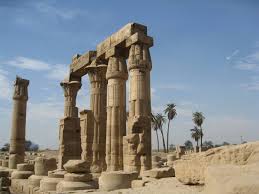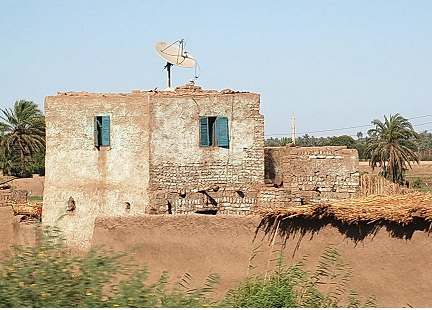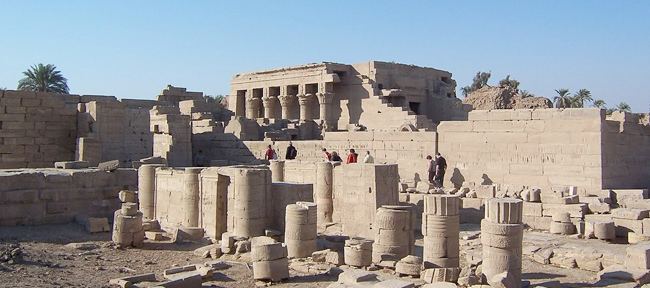Qena Travel Guide
Qena is a governorate in Upper Egypt bordered with Aswan Governorate from the south, Red Sea from the east, the New Valley from the west and Sohag Governorate from the north. The capital of the governorate is Qena City that locates about 600km away from Cairo. Qena Governorate covers about 10798km and encloses a large number of administrative centers, cities and villages. On the lands of the governorate there is a wide range of archeological sites enclosing more than 7000 antiques in cities like Naqada, Esna, El kab, and Armant in addition to Luxor that is regarded as a separate governorate currently. To facilitate the process of reaching the governorate for both locals and foreigners, Qena is linked with the other neighboring governorates with railroads and airport roads as well. It is served also by Luxor International Airport that lies few meters away from Qena City. The major economic resources for the governorate are tourism and other industries such as pottery pots, perfume, soap and oil industries. Some small villages in Qena such as Hegaza village achieved a resonating fame in manufacturing wooden items with magnificent paintings and decorations that is highly admired by Egyptians and foreigners alike. Manual carpet craft is one of the crafts that is widely practiced by inhabitants of Qena who use the wool of their cattle for producing beautiful carpets and wall hangings of attractive natural scenes over it and selling it at good prices. Qena Governorate encloses a wide range of agricultural lands and is famous for planting some crops such as sugar cane that is used for producing the black honey.
Qena City
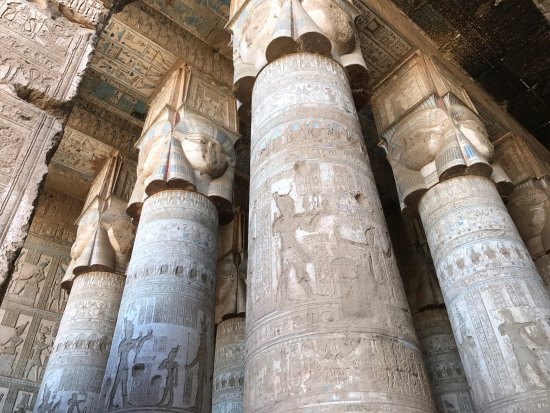
Qena City is the capital of Qena Governorate and one of the major cities in Upper Egypt. It is located on the western bank of the Nile about 39 miles from Luxor and 57 miles from El Balyana. During the Greco- Roman period, it was called Kaine and it encloses a large number of monuments such as the remains of Hathor Temple in Dendera. Nowadays, Qena is renowned for its pottery pots or porous water bottles that are made of local clay and known as Kulal. Qena is a highly preferable destination for many tourists for its moderate weather and the wide range of facilities and services provided to ensure the utmost comfort for the visitors. It is linked with the surrounding cities and governorates with various means of transportation. It can easily be reached by car due to the opening of Wadi Qena Route that links Upper Egypt with the Red Sea. Moreover, it is served by both Cairo International Airport and Luxor International Airport that facilitate reaching the city by plane. The mosque and Mausoleum of Maghrebi Abd El Rehim and Sheikh El Qenawy Mosque are prominent modern mosques in Qena that are distinguished by their magnificent style of decoration.
Nag Hammadi

Naga Hammadi is a major city in Qena Governorate that locates about 80 km away from Luxor in Upper Egypt. The historical importance of the archaeological site of Naga Hammadi is attributed to the discovery of Nag Hammadi Library, a number of codices in an earthenware jar hidden in its lands in 1945. These codices were religious and philosophical texts dating back to the 2nd century BC written in Coptic language and are believed to be a collection of books written by the Coptic monks. Naga Hammadi city was constructed by Mahmoud Pasha Hammadi; one of the wealthy people of Sohag to be a shelter for the helpless people who were forced by the British to leave their homes in Sohag. Nowadays, it is a principle industrial zone in Qena and is famous for sugar and Aluminum industries that provide most of the inhabitants of the city with their income.
Nag Hammadi Library
A collection of thirteen ancient codices containing over fifty Philosophical and religious texts were discovered in Upper Egypt in 1945. In December of that year, two Egyptian brothers found several papyri in a large earthenware vessel while digging for fertilizer around limestone caves near the modern city Hamra Dom (in Upper Egypt); then they began to sell them piece by piece. Now, the codices are in the Coptic Museum in Cairo. These codices include a large number of primary Gnostic scriptures- texts once thought to have been entirely destroyed during the early Christian struggle to define Orthodoxy. They contain scriptures such as the Gospel of Thomas, the Gospel of Philip, and the Gospel of Truth. These texts have been translated to various languages and are still regarded as a highly important Coptic texts to be found dating back to the second century BC.
Medamud
Medamud is one of the cities and archaeological sites located 10 km north-east of Luxor, in Qena Governorate. In ancient texts, the city was known in the as M3dw, then it later acquired its recent Arabic name. On its land, the Temple of Montu was excavated in 1925 by the French excavation team but it is in a highly ruinous state.
Abu Tesht

Abu Tesht is one of the administrative centers in Qena Governorate that marks its borders with Sohag Governorate. It a place of a great history that date back to the Pre-historic period at the time of Al-Amra Civilization. Nowadays it comprises of a number of small cities and villages such as El Karnak, El Amra and El Qarah.
Armant
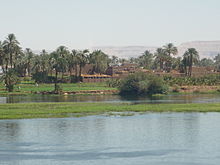
To the southwest of Luxor, about 12 km, lies the city of Armant. Its name was derived from the ancient Egyptian names 'Pr-Mntw' and '’Iwnw-Mntw', then it acquired the Greek word 'Hermontus'. Armant was a centre of the cult of god Montu and his two wives Iwnet and Thinite. The site includes many necropolises dating back to the Pre-Dynastic times as well as the remains of domestic constructions of the people who lived in this era. Side by side were some remains of a temple built for god Montu during the New Kingdom, to which many kings added throughout the history of Ancient Egypt. To the north of the site was discovered a necropolis of the Apis-bull.
El Gebelein
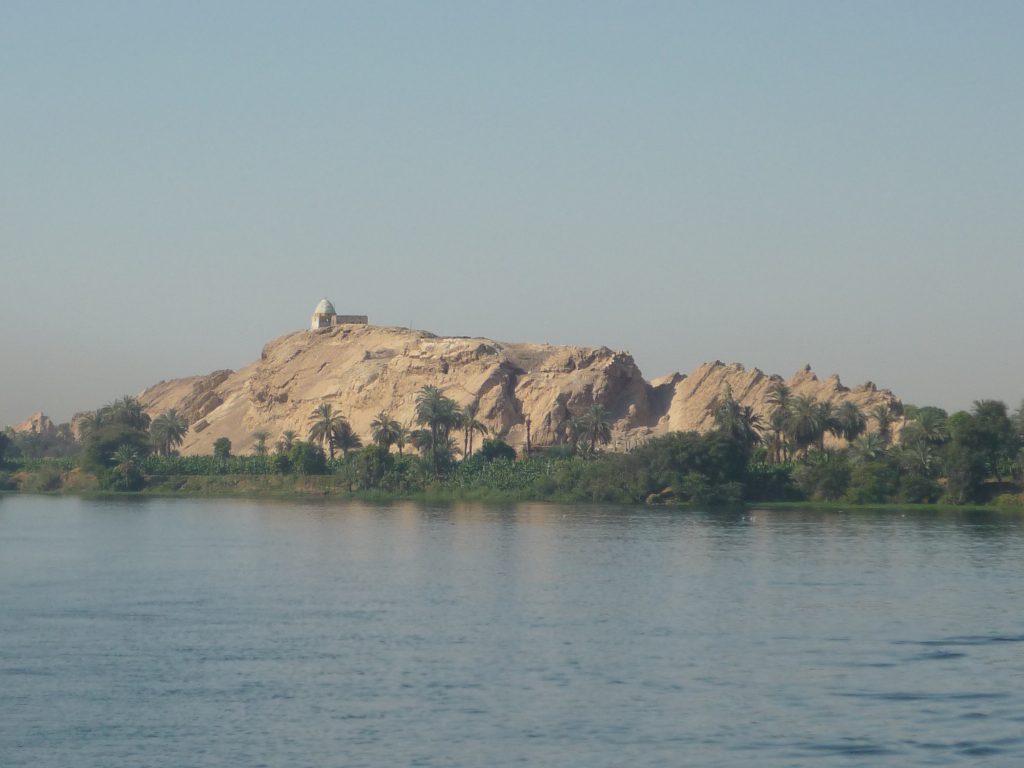
El Gebelein is a village and an archeological site on the west of the Nile, about 25 km south of Luxor. Ancient Egyptian texts refer to it as 'Pr-Hwt-Hr' ('House of Hathor'), then it became known in Greek as 'Pathyris' or 'Aphroditopolis'. The Arabic name 'El-Gebelein' refers to the existence of two hills in the site and this area is currently known as Nagaa El Gherira. The eastern hill includes the remains of the Temple of Hathor, the beginnings of which date back to the Middle Kingdom and the beginning of the Second Intermediate Period. The temple existed throughout the Pharaonic times and until the Roman Period. Inside it were discovered a big number of Demotic and Greek documents that throw light on some aspects of the daily life in Egypt during the Ptolemaic Period. The western hill, on the other hand, contains the remains of some tombs dating back to the Predynastic Period and others to the First Intermediate Period (such as the tomb of Iti).
Kom El Ahmar
Kom El Ahmar is a village and an archeological site in South Egypt, about 90km southward Luxor. The Ancient Egyptian name of the village was 'Nekhen' and its Greek name was 'Hierakonpolis' (the City of the Falcon). Nekhen was the capital of Upper Egypt before the unification of the country and the building of Memphis. Around 4000 BC, Nekhen was a prehistoric settlement in which local hunters gathered in the wake of the change of climate seeking a new sedentary life where they began farming and herding. By 3500, Nekhen became a huge city that extended 2 kilometers along the River with a population of almost 7500 inhabitants. More than 4000 flint tools–such as scrapers, micro drills, bifacial knives, serrated sickle blades, crescent drills– were found there. After making Memphis as the capital, Nekhen remained as an important administrative and religious city, where the falcon god (Horus) was worshiped, during the Old and the Middle Kingdoms. Also kings from the New Kingdom restored its temples. The prominent position of the Kom El Ahmar archaeological site is attributed to the discovery of a large number of monuments and remains of temples dating back to various prehistoric and early dynastic buildings such as the brewery, a potter’s house on its land. Famous palettes and other pieces of the First and Second Dynasties, such as the Scorpion Macehead, Narmer Palette and small pieces of ivory, were found here in Kom El Ahmar in 1898 by J.E. Quibell and F.W. Green at the Temple of Horus.
Farshout
Farshout is a town and a parish in Qena Governorate in Upper Egypt. It comprises a large number of cities and towns and a wide range of agricultural lands. It is renowned for the plantation of sugar cane and using it for manufacturing black honey. It is the residence of one of the most important tribes in South Egypt, Alhawara. Its main resources are driven from agriculture,and trade.
El Waqf
El Waqf is one of the cities of Qena Governorate that locates inbetween Naga Hamadi and Qena City and covers about 60km. For a long period, El Waqf was regarded as a part of Deshna administrative center, but it was separated from it after the wide expansion of reclaimed green areas in it. The government is planning to provide the city with all essential services for attracting more people for living in that area and reclaiming more lands. The main economic resources for the city are agriculture and food industries for most of the agricultural crops of its landl.
More about Qena Travel Guide
Temple of Hathor in Dendera
In the Pharaonic Era, Dendera (Ancient Egyptian: Tantere) was the capital of Egypt's sixth Nome. Today, Dendera is a small town in Upp...+
Read MoreThe Bucheum
The Bucheum is the burial place of Buchis Bulls, identified with Montu and worshipped in Hermonthis (Armant). It lies on the desert edge, north of...+
Read MoreTemple of Montu
God Montu (the Egyptian god of war) was identified with Horus, Amoun, and Ra. He had his seat in Iuny (Armant). The construction works of the Temp...+
Read MoreThe Step Pyramid of Ombos
Dating back to the end of the Third Dynasty, the Step Pyramid of Ombos was built of undressed rough limestone. The small pyramid was investigated...+
Read MoreArcheological Site of Naqada
In Qena Governorate, on the west bank of the Nile, lies the town of Naqada which was known in Ancient Egypt as Nubt and in classical antiquity as Om...+
Read MoreThe temple of Montu at Medamud
Dating back to the Middle Kingdom, the Temple of Montu was dedicated to god Montu. In the Eighteenth Dynasty, some additions were annexed t...+
Read More
